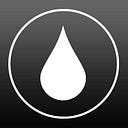The 5 Most Common Sampling Mistakes
2 min readNov 1, 2016
No matter how good the test kit, if you don’t use a water sample representative of the total water in a system, your results will not be accurate. Those Inaccurate test results can then lead you to believe the water in a system is fine when it is not or that there are problems where none exist.
Here are some common mistakes analysts make when sampling:
- Not letting the sample flush long enough. Often, there is stagnant water in the sample line. There also may be local solids or bacteria accumulations. Flushing will remove this debris. Just be certain to allow enough time for the sample to flush so it gives a true representation of the bulk water in the system. Let me offer a piece of advice at this juncture — have a bucket on hand — especially in a nice utility room where leaving the floor wet would be frowned upon!
- Not rinsing the sample bottle thoroughly. I am always amazed to see how veteran water treaters and consultants automatically rinse their sample bottles three times before collecting a sample. I guess that’s engrained in their brains. Bottles that are not rinsed thoroughly could carry residuals from a previous test, leading to erroneous test results for the new sample.
- Not testing the sample soon enough. Some analytes, such as chlorine and sulfite, dissipate over time; therefore, all time-sensitive tests are best done immediately after collecting the sample.
- Testing a hot sample. To be accurate, boiler water tests need to be performed when the sample is at room temperature. This involves collecting the boiler water using either a sample cooler (preferred) or using a bottle that can be capped, sealed, and then cooled in a water bath.
- Taking a sample too close to a chemical feed point. Any chemical feeding directly into the sampling area at the time of collection could lead to a false-high reading and, eventually, an incorrect adjustment to chemical feed rates.
In a nutshell, proper sampling technique is the precursor to obtaining accurate test results. Refine your technique, and you will feel more confident about your test results and your treatment recommendations.
